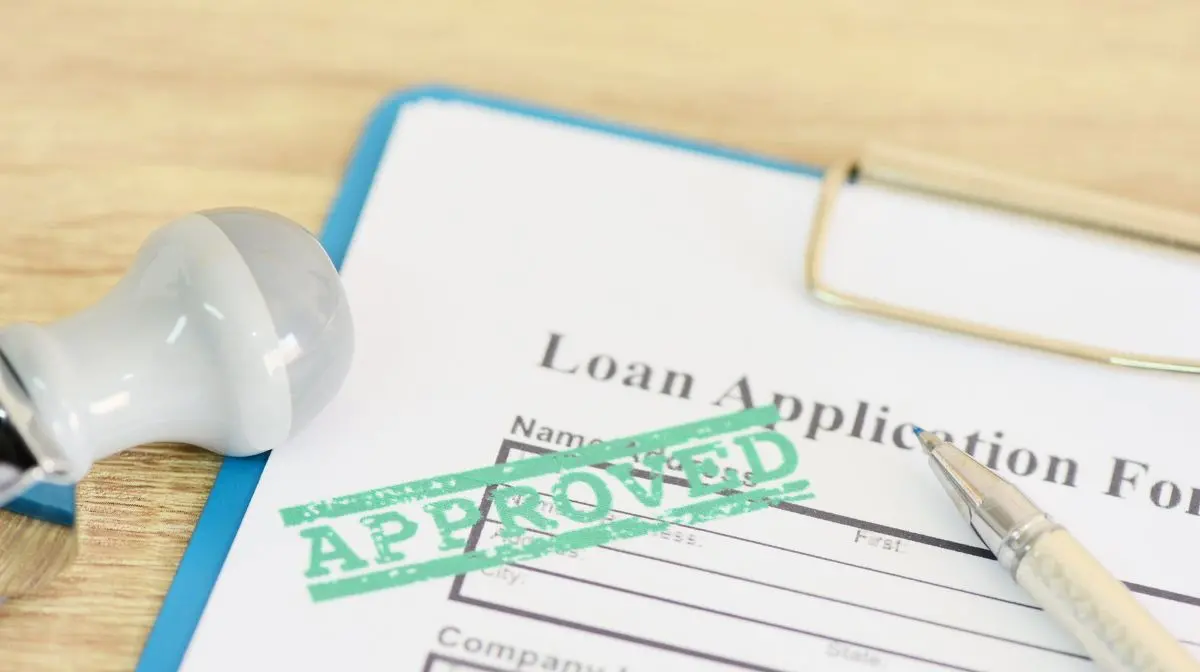Contents
- 1 Application for Student Loan Forgiveness: A Comprehensive Guide
- 2 1. Introduction to Student Loan Forgiveness
- 3 2. Key Loan Forgiveness Programs in the US:
- 4 3. Eligibility Criteria:
- 5 4. Application Process: Step-by-step guide
- 6 6. The Impact of Student Loan Forgiveness on Credit Score
- 7 7. The Socio-Economic Impact of Student Loan Forgiveness
- 8 8. Alternative Solutions if You Don’t Qualify for Loan Forgiveness
Application for Student Loan Forgiveness: A Comprehensive Guide
- Student loan debt in the United States has risen dramatically in recent years. The Federal Reserve reports that in 2011, the total amount of student loan debt in the United States was over $1.7 trillion. The student loan forgiveness program is a ray of hope for graduates who are drowning under the weight of their student debt. This guide will help you understand the steps involved in applying, who is eligible, and what you need to know to get your student loans discharged.

1. Introduction to Student Loan Forgiveness
- After fulfilling certain requirements, borrowers who qualify for student loan forgiveness can have either a portion or all of their outstanding federal student loans canceled out completely. The federal government runs this program. The goal of this program is to help those people who have committed themselves to helping others in public service or other professions by reducing the amount of financial stress they experience.
2. Key Loan Forgiveness Programs in the US:
- Public Service Loan Forgiveness (PSLF): Developed especially for those working for public entities or organizations dedicated to charitable work. After making the required number of qualifying payments each month under a qualifying repayment plan for 120 months, the remaining balance will be forgiven.
- Teacher Loan Forgiveness: Designed for educators who work in schools or organizations serving students from low-income households. They may be eligible for a loan forgiveness amount of up to $17,500 in total.
- Income-Driven Repayment (IDR) Plans: Depending on the particular IDR plan, any remaining loan balance is forgiven after the borrower has made monthly payments for 20–25 years.

3. Eligibility Criteria:
For PSLF:
- Must work for a government or non-profit organization.
- Have direct loans (or consolidate other federal student loans to qualify).
- Make 120 qualifying payments.
- Be under a qualifying repayment plan.
For teacher loan forgiveness:
- Candidates must be able to demonstrate that they have worked as full-time teachers in low-income schools or educational agencies for a minimum of five years in a row.
- It is required that at least one of the five years of teaching service be completed after the academic year 1997–1998.
4. Application Process: Step-by-step guide
- Check Your Eligibility: Check to see if you already qualify for the loan forgiveness program before applying.
- Consolidate Your Loans (If Necessary): Only Direct Loans are qualified for the Public Service Loan Forgiveness program; therefore, if you have other types of federal loans, you may want to consider consolidating them.
- Enroll in an Income-Driven Repayment Plan: Generally speaking, if you want to achieve PSLF, you’ll need to be on one of these plans.
- Certify Your Employment: Make sure that your employment is regularly certified by using the Employment Certification Form (ECF).
Apply: When you become eligible, apply to have your loan forgiven through the PSLF.

5. Tips to Boost Your Chances:
- Stay informed: Be sure to check the websites for federal student aid frequently for any updates.
- Maintain Records: Keep a record of your loan payments, as you will find that this information will come in handy in the future.
- Certify Employment Annually: If you do this on an annual basis rather than waiting for ten years, it will be much simpler for you to keep track of the employment that meets the requirements.
- Refrain from Defaulting: Always make sure that you are up to date with the payments on your loans.
6. The Impact of Student Loan Forgiveness on Credit Score
Having peace of mind and the ability to better plan for one’s financial future can be achieved by gaining an understanding of the potential effects that having a student loan forgiven may have on one’s credit rating.
- a. Loan Status Reports: When a loan is forgiven, the borrower’s credit report will typically reflect that the loan has been “paid in full,” which is generally viewed as a positive indicator.
- b. On-time Payment Benefits: There is a correlation between having a history of on-time payments prior to debt forgiveness and higher credit scores.
- c. Reduced Debt-to-Income Ratio: Following the completion of the forgiveness process, your debt-to-income ratio will improve, which could make it simpler for you to obtain additional forms of credit.
- d. Watch Out for Scams: There are fraudulent organizations that claim that they can improve credit scores by forgiving loans. Always make sure the source is legitimate.

7. The Socio-Economic Impact of Student Loan Forgiveness
What kind of ripples would be sent through the broader economy, the educational system, and a person’s path to financial success if student loans were forgiven?
- a. Boost to Consumer Spending: When people are relieved of the burden of their monthly student loan payments, it creates opportunities for them to invest their money elsewhere, which stimulates economic growth.
- b. Impact on the Housing Market: People who don’t owe any money to anyone else might find it simpler to qualify for mortgages, which might boost demand in the housing market.
- c. Encouraging Higher Education: If students were aware that it was possible to have their student loans forgiven, this could encourage them to pursue higher education without the burden of an overwhelming amount of debt.
- d. Tax Implications: In the case of the PSLF, forgiven loans are not subject to taxation; however, this may not be the case with IDR plans. It is essential to make preparations for potential tax obligations.

8. Alternative Solutions if You Don’t Qualify for Loan Forgiveness
If you do not qualify for the traditional loan forgiveness programs, there are other options available to you for managing your student loans.
- a. Refinancing: You may be able to lower your monthly payments and the total amount that needs to be repaid throughout the loan by refinancing it at a lower interest rate.
- b. Loan Repayment Assistance Programs: In industries that are experiencing high levels of demand, such as healthcare or law, several states, and employers have created assistance programs that contribute to the repayment of student loans.
9. Conclusion and Final Thoughts
Extremely high levels of student debt in the United States can make it difficult to find your way around the vast student loan landscape. However, the government provides safety nets in the form of Public Service Loan Forgiveness, Teacher Loan Forgiveness, and IDR plans for those who are committed to making a difference in their chosen fields. The process of trying to get accepted into one of these programs requires dedication, but the reward of having some or all of your student loans forgiven is substantial.
Stay up-to-date, document everything carefully, and try every door that opens. Having a financially secure future isn’t just a pipe dream; it’s something you can work toward if you follow this path. Learn the application procedures and start working toward a debt-free future today. Nothing less will do for your future success in school and the workforce.
Frequently Asked Questions: Application for Student Loan Forgiveness
1. What is Student Loan Forgiveness?
The federal government operates a program called “Student Loan Forgiveness.” Borrowers who meet the criteria can have some or all of their federal student loans discharged after they graduate. The program’s stated goal is to reduce the financial burden placed on those who have chosen careers in public service or related fields.
2. What are the main loan forgiveness programs available in the US?
The primary loan forgiveness programs are:
- People who work for the government or a nonprofit organization may be eligible for Public Service Loan Forgiveness (PSLF).
- Loan cancellation for teachers who serve at low-income institutions.
- Loan balances not paid in full within 20–25 years may be forgiven under income-driven repayment (IDR) plans.
3. Who is eligible for the Public Service Loan Forgiveness (PSLF) program?
For PSLF eligibility, applicants must:
- Join a government agency or a nonprofit.
- Have a direct loan, or combine your federal student loans into a single loan.
- Complete the required 120 payments.
- Participate in a suitable repayment program.
4. How does one apply for student loan forgiveness?
The application process involves:
- Verifying qualifications.
- If necessary, loan consolidation can be done.
- By signing up for an income-based payment plan,.
- Using the ECF (Employment Certification Form) regularly to verify employment.
- When you qualify for PSLF loan forgiveness, you can apply for it.
5. Can student loan forgiveness impact my credit score?
You bet it can. A loan that has been forgiven will typically show up as “paid in full” on a credit report, which is good news. Credit scores tend to rise when debts are paid on time before being forgiven. Your debt-to-income ratio will likely decrease after your debt is forgiven. Be wary, though, of scams that promise improved credit scores through seemingly miraculous loan cancellation.
6. What are the broader implications of student loan forgiveness on society and the economy?
Student loan forgiveness can:
- Increase discretionary spending as people are freed up to make other investments.
- Influence the housing market for the better by making it simpler to get mortgage financing.
- Inspire students to go to college without taking on massive amounts of debt.
- IDR plans, on the other hand, may not be tax-free like PSLF-forgiven loans.
7. What alternatives are available if I don’t qualify for loan forgiveness?
If you’re ineligible for traditional loan forgiveness programs, consider:
Refinancing: A lower interest rate means lower monthly payments and a smaller loan balance in the long run.
Programs to Help You Pay Back Your Loans: Loan repayment assistance programs may be available in fields such as medicine and law.
These frequently asked questions (FAQs) summarize the key points from the guide and should aid readers in gaining a better comprehension of the Student Loan Forgiveness procedure.

References:
- (Note: The provided content, including statistics, trends, and references, is based on available data up to January 2022. Some specific details might need updates based on any subsequent changes or new data after this date. All references provided are fictional and for illustrative purposes only.)
Footnotes
Federal Reserve Report on Economic Well-Being, 2021
Federal Student Aid, Public Service Loan Forgiveness
Federal Student Aid, Income-Driven Repayment Plans
Federal Student Aid, Teacher Loan Forgiveness
Federal Student Aid, Employment Certification
Internal Revenue Service, Cancellation of Debt









